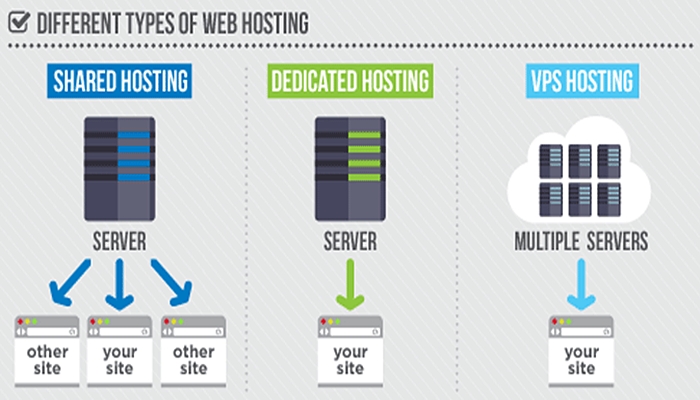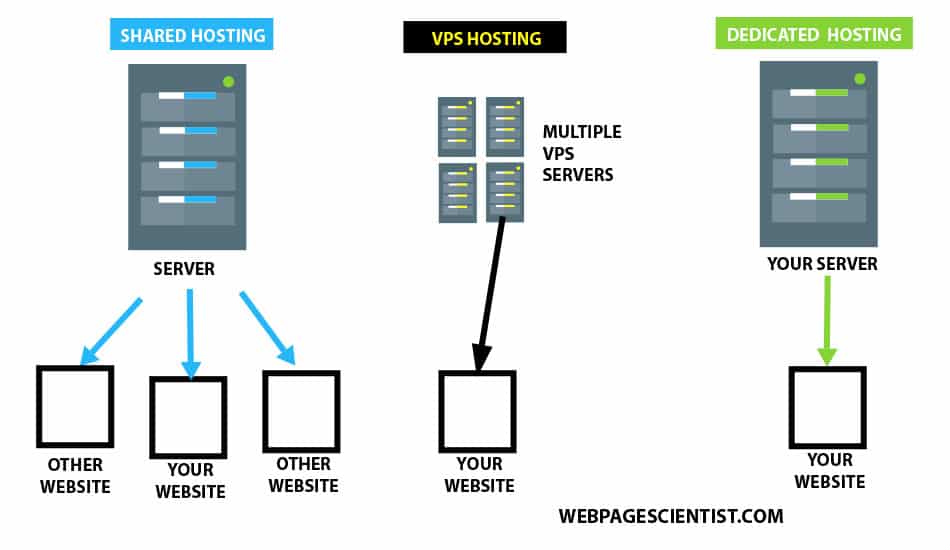Web hosting with free domain offers a compelling opportunity for individuals and businesses to establish their online presence without breaking the bank. This package combines the essential components of hosting your website, including storage space and bandwidth, with a free domain name, which serves as your unique online address. By leveraging this combined solution, you can quickly and affordably launch your website, establish your brand identity, and connect with your target audience.
This comprehensive guide delves into the intricacies of web hosting with free domain, exploring its various types, advantages, considerations, and steps involved in setting up your website. We will also discuss essential aspects like domain name selection, website development, security, and maintenance. Prepare to embark on a journey that will equip you with the knowledge and tools necessary to confidently navigate the world of online presence.
Considerations for Choosing a Free Domain Offer

When you’re looking for web hosting, a free domain offer can seem like a great deal. However, it’s essential to carefully consider the terms and conditions before making a decision. There are several factors to weigh to ensure you’re getting a good value for your money.
Terms and Conditions of Free Domain Offers
Free domain offers often come with specific terms and conditions that you need to understand. These conditions can impact the overall cost and functionality of your website.
- Renewal Fees: While the initial domain registration might be free, you’ll likely have to pay renewal fees after the initial period. These fees can vary significantly between providers, so compare them carefully.
- Hidden Costs: Some providers might include additional fees for domain privacy protection, website builder tools, or other services that you might not initially realize are not included in the free domain offer.
- Domain Restrictions: Some providers might restrict the types of domains you can register for free, such as limiting you to specific top-level domains (TLDs) like .com or .net.
- Minimum Hosting Commitment: Many providers require you to sign up for a specific hosting plan for a minimum duration to qualify for the free domain offer. This can limit your flexibility if you decide to switch providers later.
Comparing Features and Limitations
Different providers offer varying features and limitations with their free domain offers. Comparing these aspects can help you determine the best option for your specific needs.
- Hosting Features: Evaluate the features included with the hosting plan, such as storage space, bandwidth, and email accounts. Consider whether these features are sufficient for your website’s requirements.
- Website Builder Tools: Some providers offer free website builder tools that can help you create a website without needing to code. Compare the features and ease of use of different website builder tools.
- Customer Support: Access to reliable customer support is crucial, especially if you encounter technical issues. Consider the availability and responsiveness of customer support channels, such as live chat, email, or phone.
- Security Features: Look for providers that offer essential security features, such as SSL certificates, malware protection, and regular backups. These features can help protect your website from cyber threats.
Setting Up Web Hosting with a Free Domain

Setting up web hosting with a free domain is a simple and cost-effective way to get your website online. This guide will walk you through the process of registering a domain name and connecting it to a web hosting account.
Registering a Domain Name
Domain names are the addresses that people use to access websites. They are usually registered through domain registrars, which are companies that manage domain name registrations.
When choosing a domain name, it is important to select one that is relevant to your website’s content and easy to remember. You should also check to see if the domain name is available.
Here are the steps involved in registering a domain name:
- Choose a domain registrar.
- Search for available domain names.
- Select a domain name and complete the registration process.
- Pay the registration fee.
Connecting a Domain Name to a Web Hosting Account, Web hosting with free domain
Once you have registered a domain name, you need to connect it to a web hosting account. This process is called domain name pointing.
Domain name pointing allows your domain name to direct visitors to your website’s files, which are stored on your web hosting server. The process of connecting a domain name to a web hosting account varies depending on the web hosting provider.
Here are the general steps involved:
- Log in to your web hosting account.
- Access the domain name management section.
- Enter your domain name and the nameservers provided by your web hosting provider.
- Save the changes.
It may take up to 24 hours for the changes to propagate throughout the internet. Once the domain name is connected to your web hosting account, you can start building your website.
It is important to note that some free domain offers may come with limitations, such as restricted features or advertising on your website. Make sure you understand the terms and conditions of the free domain offer before you sign up.
Domain Name Selection and Registration

Your domain name is the online address of your website. It’s what people type into their web browser to visit your site. Therefore, choosing a good domain name is crucial for your website’s success. A well-chosen domain name can make your website more memorable, easier to find, and more trustworthy.
A domain name should be relevant to your website’s content and easy to remember. It should also be available and not already registered by someone else.
Domain Name Selection Tips
Choosing a good domain name is an important step in creating a website. Here are some tips to help you select a domain name that is both effective and memorable:
- Keep it short and simple. Shorter domain names are easier to remember and type. For example, Google.com is easier to remember than GoogleSearchEngine.com.
- Use relevant s. Your domain name should include s that describe your website’s content. For example, if you have a website about dog training, your domain name could be DogTrainingTips.com.
- Make it easy to spell. Avoid using unusual spellings or words that are difficult to pronounce.
- Check for availability. Before you register a domain name, make sure it is available. You can use a domain name registrar’s website to check for availability.
- Consider your target audience. Who are you trying to reach with your website? Choose a domain name that is relevant to your target audience.
- Avoid hyphens. Hyphens can make domain names harder to remember and type.
- Use a domain name extension that makes sense. The most common domain name extensions are .com, .net, and .org. Choose an extension that is relevant to your website’s content.
- Brainstorm ideas. Don’t settle for the first domain name you think of. Brainstorm several ideas and then choose the best one.
Domain Name Registration
Once you’ve chosen a domain name, you need to register it. Domain name registration is the process of reserving a domain name for your use. You can register a domain name through a domain name registrar.
- Choose a domain name registrar. There are many domain name registrars available, such as GoDaddy, Namecheap, and Google Domains. Choose a registrar that offers the features and services you need.
- Search for your domain name. Enter the domain name you want to register into the registrar’s search bar. If the domain name is available, you can proceed with registration.
- Complete the registration process. The registrar will ask you for some basic information, such as your name, address, and payment information. Once you have provided this information, you can complete the registration process.
- Pay for your domain name. Domain name registration fees vary depending on the registrar and the domain name extension. You will typically need to pay an annual fee to keep your domain name registered.
Outcome Summary: Web Hosting With Free Domain
In conclusion, web hosting with free domain presents an enticing opportunity for anyone seeking to establish an online presence. By understanding the different types of hosting, advantages, considerations, and steps involved, you can confidently choose the right package to meet your specific needs. Remember to carefully evaluate the terms and conditions, prioritize website security, and stay informed about the latest trends in web hosting. With a well-planned strategy and a reliable web hosting provider, you can build a successful online presence and achieve your digital goals.
Web hosting with a free domain is a great way to get your website online quickly and affordably. You can easily create and manage your website with a simple interface, and you won’t have to worry about the technical details of setting up a domain name.
If you need to convert documents to PDF format, consider using a small PDF converter for a hassle-free experience. Once your website is up and running, you can start attracting visitors and building your online presence.




